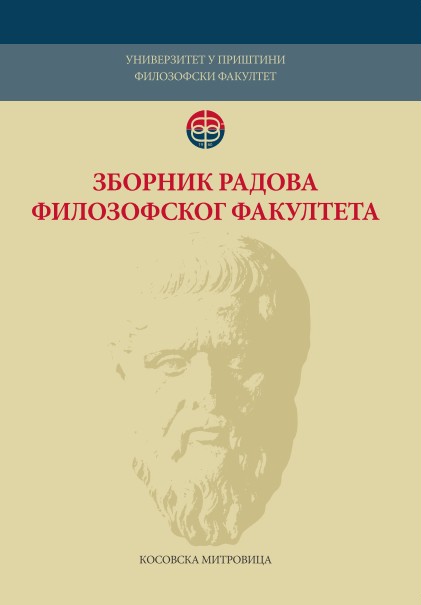Београдски студенти и политичке организације 1935-1941
Belgrade students and political organizations 1935-1941
Author(s): Dragomir Bondžić, Rade RistanovićSubject(s): History, Local History / Microhistory, Political history, Recent History (1900 till today)
Published by: Филозофски факултет, Универзитет у Приштини
Keywords: Kingdom of Yugoslavia; Belgrade; Students; Ideology; Demonstrations; Communists; Serbian Culture Club; Democratic Part; Zbor; Yugoslav Radical Union; Slovenski jug
Summary/Abstract: During the period between two world wars a dynamic political life took place among the students of the University of Belgrade. The University gathered thousands, close to 10,000 young people on the night of the outbreak of World War II. This attracted political parties to form student political organizations among Belgrade students and to propagate the political and ideological views they supported. Among the political organizations that were present at the University of Belgrade, especially during the second half of the 1930s, were: the Communist Party of Yugoslavia and the League of Communist Youth of Yugoslavia, the Democratic Student Club, the Youth Section of the Serbian Cultural Club, the Student Club of the Yugoslav Radical Union Slovenski Jug and the Youth Organization Zbor. Of all these organizations, the greatest influence during the 1930s was exerted by the Communists, who, although illegal, persecuted and few in number, formed an extensive network of cells at the faculties, and zealously, organized and aggressively acted among the student population. Insisting on a radical solution to the existing general political and socio-economic problems, as well as university and student issues, attracted a large number of Belgrade students to the communist student movement, who took part in numerous demonstrations, strikes and incidents. The ideological-political platform and forms of action of other political organizations at the University, primarily national and right oriented, were largely directed against the influence and actions of communist students. After the outbreak of World War II and the signing of the Ribbentrop-Molotov Pact in 1939, the mutual relations of political organizations at the University became significantly strained. Opposing organizations of Belgrade student youth fought a verbal war on the night of the outbreak of the Second World War on the territory of Yugoslavia, but also often real street battles, in which all the irreconcilability and sharpness of conflicting ideologies of wider political organizations they represented were manifested. It will soon turn out that it was just a preparation for serious, armed and bloody conflicts during the civil war that broke out as part of World War II.
Journal: Зборник радова Филозофског факултета у Приштини
- Issue Year: 50/2020
- Issue No: 2
- Page Range: 187-214
- Page Count: 28
- Language: Serbian

